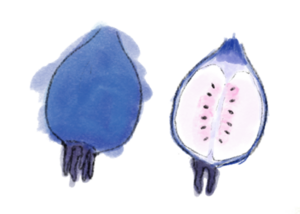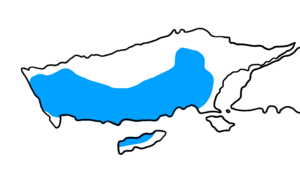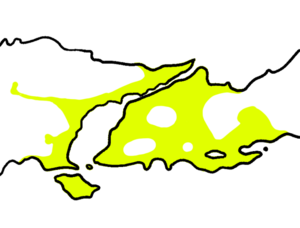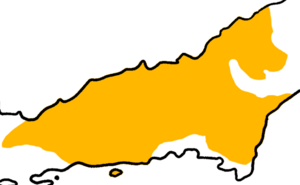Flora of Okrit
Okrit is home to a large variety of endemic flora that is integrally tied to the nation's culture, history and economy.
List of Plants
Cultural relevance
Dagger Tree
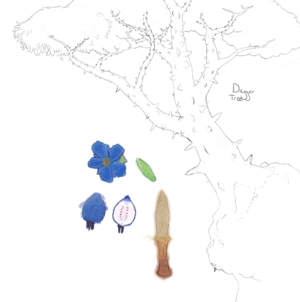
Dagger Trees are large trees of the family Rosaceae endemic to the Okriti island of Waaq. They grow from 5 to 12 metres tall and within 6 to 15 metres in spread. They are easily identified by their wide, flat prickles from which they are named. The flowers and fruit are blue, unique among the Rosaceae. Flowering occurs during the last half of the dry season, with fruit ripening during during the beginning of the wet season.
Dagger Trees are named as such due to the rather straight and symmetrical shape of their prickles, resembling that of a metal dagger. The prickles themselves vary greatly in size, the larger prickles residing at the lower, older parts of the tree. The bark is notably hard, and the prickles themselves can become quite sharp, in contrast to the soft and fragrant inner wood. This has made the tree incredibly popular due to its versatility in a variety of woodcraft purposes.
Melon Tree
The Melon Tree is a short, salt tolerant tree found along the banks of the Omolai straight and along it's tributaries and marshes. It is noted for its thin, angular branches that droop downward once bearing fruit. These large round fruits earn the melon tree it's name. Melon trees are commonly grazed by Omolain Hippos, who are the main propagator of the seeds.
Sick Man myrtle
The Plague Myrtle, or Sick Man's Myrtle, is a medium sized deciduous tree of the family Myrtaceae noted for it's yellow bark and black resin.
